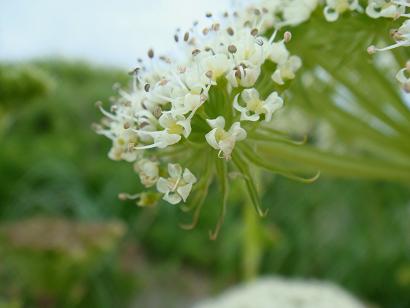 |
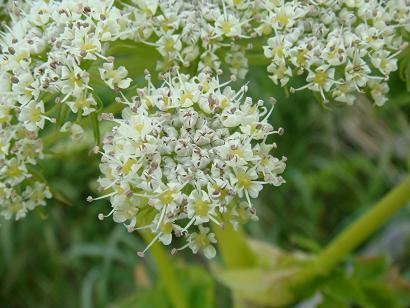 |
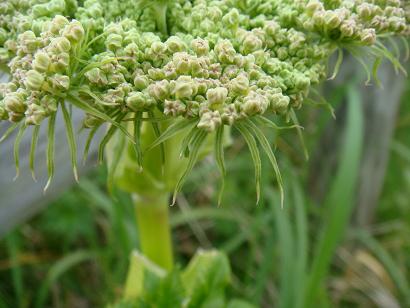 |
|---|---|---|
| June 2008 at Abashiri City |
June 2008 at Abashiri City |
June 2008 at Abashiri City |
| Family | Apiaceae (alt. Umbelliferae) |
| Scientific name | Angelica gmelinii (de Candolle) Pimenov |
| Synonyms | Archangelica gmelinii de Candolle; Angelica gmelinii (de Candolle) A. Gray; Angelica lucida auct., non L.; Coelopleurum gmelinii (de Candolle) Ledebour; Coelopleurum lucidum (L.) Fernald var. gmelinii (de Candolle) H. Hara; Coelopleurum lucidum auct., non (L.) Fernald |
| Common name | (Japanese common name) ezo-no-shishi-udo (エゾノシシウド, 蝦夷獅子独活 or 蝦夷猪独活 [meaning: Ezo shishi-udo (Ezo = an old name of Hokkaido, shishi-udo = Angelica pubescens Maximovicz)]) |
| (English common name) none | |
| Distribution | (Japan) Hokkaido, Honshu (Aomori Prefecture) |
| (Other nations) Russia | |
| Habitat | Seaside (sand beach or rocks) |
| Chromosomal number | 2n=22 (2x) |
| Description | Plants electing ca. 60-150cm tall. Leaves 1-2 pinnate with pinnatifid leaflets to 3-pinnate, leaflets each 5-12cm long with biserratus edge. Flowers white, flowering in June to July. Fruits 6-8mm long. Perennial plants. |
| Note | Angelica gmelinii (de Candolle) Pimenov is a very similar plant to Coelopleurum lucidum (L.) Fernald in Canada & USA. Previously these plants were or used to be confused with and mis-identified as each other. |
 |
 |
 |
|---|---|---|
| June 2008 at Abashiri City |
June 2008 at Abashiri City |
June 2008 at Abashiri City |
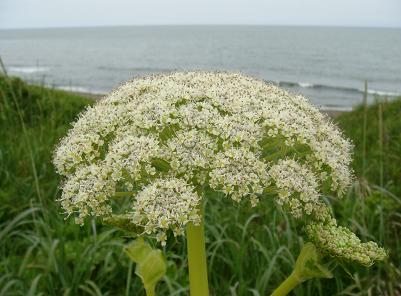 |
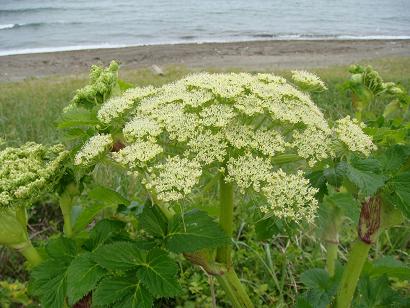 |
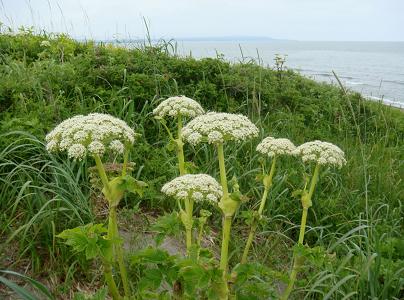 |
|---|---|---|
| June 2008 at Abashiri City |
June 2008 at Abashiri City |
June 2008 at Abashiri City |
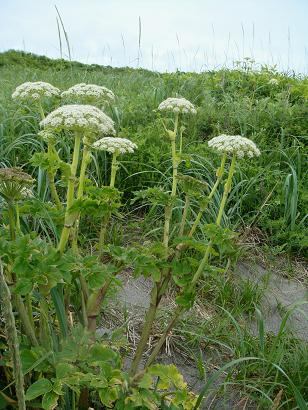 |
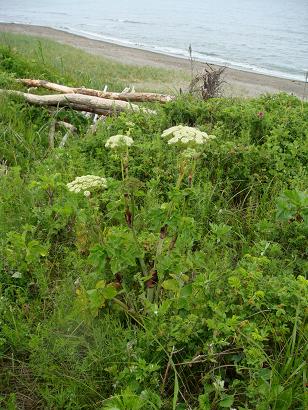 |
|---|---|
| June 2008 at Abashiri City |
June 2008 at Abashiri City |